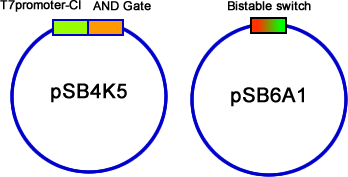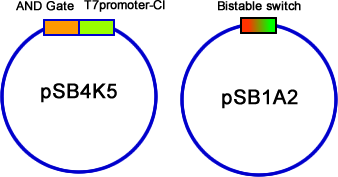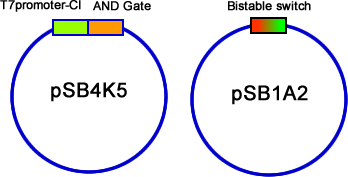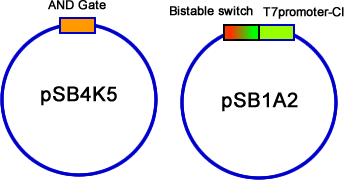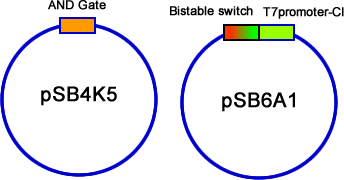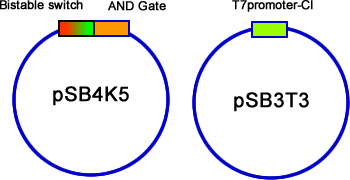Team:PKU Beijing/Project/Assemble
From 2009.igem.org
(Difference between revisions)
| Line 3: | Line 3: | ||
{{PKU_Beijing/Header2}} | {{PKU_Beijing/Header2}} | ||
| - | |||
==='''First Stage Assembly'''=== | ==='''First Stage Assembly'''=== | ||
| Line 23: | Line 22: | ||
[[Image:PKU_First_Stage_Assembly_First_Strategy_4.png|280px|left|thumb|fig7. First strategy---d]] | [[Image:PKU_First_Stage_Assembly_First_Strategy_4.png|280px|left|thumb|fig7. First strategy---d]] | ||
| - | + | <br><br><br><br><br><br><br><br><br><br><br><br> | |
'''The second strategy is shown below:''' | '''The second strategy is shown below:''' | ||
| Line 33: | Line 32: | ||
[[Image:PKU_First_Stage_Assembly_Second_Strategy_4.png|280px|left|thumb|fig11. Second strategy---d]] | [[Image:PKU_First_Stage_Assembly_Second_Strategy_4.png|280px|left|thumb|fig11. Second strategy---d]] | ||
| + | '''The third strategy''' is to put bistable switch together with the AND Gate. It is easier for the bistable module to be switched. | ||
| + | [[Image:PKU_First_Stage_Assembly_Third_Strategy_1.png|270px|left|thumb|fig12. Third strategy---a]] | ||
| + | [[Image:PKU_First_Stage_Assembly_Third_Strategy_2.png|280px|left|thumb|fig13. Third strategy---b]] | ||
| + | [[Image:PKU_First_Stage_Assembly_Third_Strategy_3.png|270px|left|thumb|fig14. Third strategy---c]] | ||
| + | [[Image:PKU_First_Stage_Assembly_Third_Strategy_4.png|280px|left|thumb|fig15. Third strategy---d]] | ||
Revision as of 16:19, 15 October 2009
 "
"





